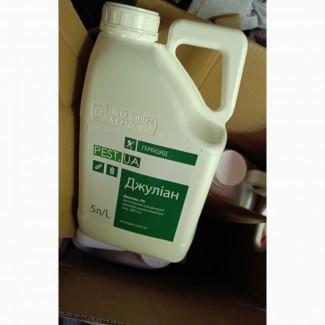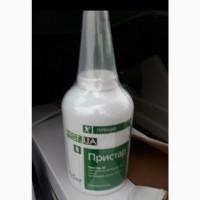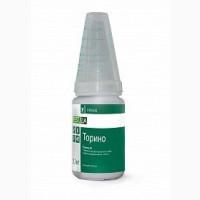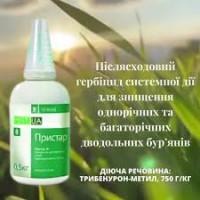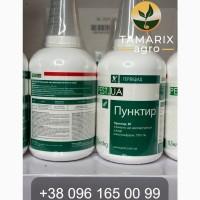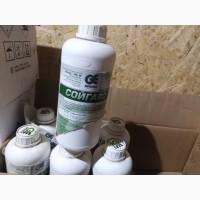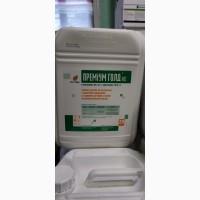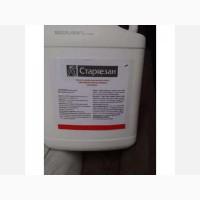/ Fertilizers and plant protection products / Herbicides / Julian - post-emergence selective herbicide...
For sale / buy
Julian - a post-emergence selective herbicide for the destruction of weeds, Kyiv region.
Price2250 UAH.
Region:all of Ukraine,
Kyiv region region.
(Vyshhorodok)
Updated:
Julian is a post-emergence selective herbicide of systemic action for the destruction of annual and some perennial dicots, including weeds resistant to 2,4-D and MCPA.
Active ingredient: Dicamba, 480 g/l Formulation: Soluble concentrate
Container: 5 l, the price is per canister.
Temperature conditions of use: It works effectively in the temperature range from +10 °C to +27 °C, but the optimal temperature for processing is from +15 °C to +20 °C. Cool weather slows down the visible effect of the drug.
Rate of consumption of working fluid: 200-300 l/ha.
Advantages of Julian herbicide: Julian is a classic herbicide for grain protection, which clears the field of annual and perennial rhizome weeds for the following crops in the crop rotation.
The optimal partner for tank mixtures for drugs of the groups: 2,4-D, sulfonylureas, triazines, glyphosates, as it prevents the emergence of resistance and enhances the effect due to pronounced synergism.
Has a wide range of action: destroys more than 200 types of weeds, including field birch, species of thistle, lettuce, etc.
Penetrates into the plant both through its green parts and through the root system.
Julian does not affect the following crops in the crop rotation.
When used in tank mixtures with herbicides of the sulfonylurea group (in half doses), it reduces their effect almost to a minimum, without reducing effectiveness.
Completely decomposes in the soil during the growing season.
Recommendations for the use of the Julian herbicide. Spraying crops of cereal grains (winter and spring wheat, barley, rye, oats) in the spring in the phase of the beginning of tillering of the crop (from 3-5 leaves) before emergence into the tube, in the early phases of the growth of annual weeds (2-5 leaves) and in the rosette phase (up to 5 cm in diameter) of perennials weeds (up to 15 cm tall).
Spraying of corn crops (both independently and in a mixture) in the phase of 3-5 leaves and 15 cm in height for perennial weeds.
On millet, it is used both independently and in combination with drugs of the 2,4-D and MCPA group in the phase of tillering of the crop and 2-6 leaves in annual and perennial weeds up to 15 cm in height.
The use of tank mixes should be specified with the application regulations developed by the manufacturer for each specific crop:winter wheat – Julian (0.15-0.2 l/ha) + Prystar (10-15 g/ha) + Kite surfactant (0.1 l/100 l of water);corn – Julian (0.3-0.5 l/ha) + Tronomit (40-50 g/ha) + PAR Kite (0.1 l/100 l of water); for clearing fields from perennials – Julian (0.2 l/ha) + Spiner (3-4 l/ha). The drug Julian does not affect the following cultivated plants, it completely decomposes during the growing season.
The mechanism of action of Julian herbicide Julian is a herbicide with pronounced systemic action. It acts as a growth inhibitor, affecting the processes of photosynthesis and cell division in the weed meristem. The drug penetrates plants both through the leaves and through the root system of weeds, completely destroying the leaf apparatus and roots of weeds. The action begins from the moment of contact with the drug. Visually, the effect of the herbicide manifests itself 2-3 hours after application (depending on weather conditions, development phase, type of weeds and rate of consumption of the drug).
Regulation of application and rate of consumption of Julian herbicide Culture Objects Rate of drug consumption, l/ha Treatment method Maximum number of treatments
Winter wheat
Annual dicotyledons, incl. resistant to 2,4-D and MCPA, and some perennial dicots, including thistles, weeds
0.15-0.30
Spraying crops from the budding phase to the exit into the tube 1
Corn
Annual dicotyledons, incl. resistant to 2,4-D and MCPA, and some perennial dicots, including thistles, weeds
0.4-0.8
Spraying regardless of the phase of culture development, in the phase of 2-4 weed leaves
Preparations with an identical active ingredient are used on the following cultures
Spring wheat, rye, oats, barley
Annual dicotyledons, incl. resistant to 2,4-D and MCPA, and some perennial dicots, including thistles, weeds
0.15-0.30
Spraying in the budding phase before the culture enters the tube.
Deluge Extra® - Soil herbicide for protection against annual grass and dicotyledonous weeds.
Active ingredient: S-metolachlor 312.5 g/l + Terbuthylazine 187.5 g/l(//tractor-service.com)
Mode of action: soil.
Preparative form: emulsion concentrate
Tare unit: canister 5 l. the price is per canister.
What are the advantages of Deluge Extra herbicide:
Long period of protection (8-10 weeks)
Control of a wide range of annual grasses and dicotyledonous weeds, including late-emerging species
Possibility of flexible application in different types of crop rotations
High selectivity to cultures.
The mechanism of action of Deluge Extra herbicide
Deluge Extra® acts systemically, quickly penetrates weed plants and stops their growth. In the soil, the drug penetrates through cotyledons in dicots and coleoptiles in cereal weeds; in vegetative weeds, the drug penetrates through the roots and leaves, causing their death. S-metolachlor acts in a complex way: it causes inhibition of the biosynthesis of lipids and fatty acids, flavonoids and protein, which causes inhibition of sulfur-hydryl-containing biomolecules and acetyl coenzyme A. Terbuthylazine inhibits electron transport in photosystem II in the process of photosynthesis.
Regulations for the use of Deluge Extra herbicide:
Culture
Weed
Application rate, kg/l/ha
Method and time of processing
Multiplicity of treatments
Last processing period (days before harvest)
Sunflower
Annual grass and dicotyledonous weeds
4.5 l/ha
Spraying the soil before sowing or before the appearance of crop seedlings
1
Soya
4.5 l/ha
Spraying the soil before sowing or before the emergence of seedlings
1
Sorghum
4.5 l/ha
Spraying the soil before the appearance of crop seedlings, or after seedlings in the phase of 3-5 leaves
1
Corn
4.0-4.5 l/ha
Spraying the soil before sowing, after sowing or after crop emergence to the phase of 3-5 leaves in the crop
1
Consumption rate of working solution: 200-300 l/ha.
Active ingredient: Dicamba, 480 g/l Formulation: Soluble concentrate
Container: 5 l, the price is per canister.
Temperature conditions of use: It works effectively in the temperature range from +10 °C to +27 °C, but the optimal temperature for processing is from +15 °C to +20 °C. Cool weather slows down the visible effect of the drug.
Rate of consumption of working fluid: 200-300 l/ha.
Advantages of Julian herbicide: Julian is a classic herbicide for grain protection, which clears the field of annual and perennial rhizome weeds for the following crops in the crop rotation.
The optimal partner for tank mixtures for drugs of the groups: 2,4-D, sulfonylureas, triazines, glyphosates, as it prevents the emergence of resistance and enhances the effect due to pronounced synergism.
Has a wide range of action: destroys more than 200 types of weeds, including field birch, species of thistle, lettuce, etc.
Penetrates into the plant both through its green parts and through the root system.
Julian does not affect the following crops in the crop rotation.
When used in tank mixtures with herbicides of the sulfonylurea group (in half doses), it reduces their effect almost to a minimum, without reducing effectiveness.
Completely decomposes in the soil during the growing season.
Recommendations for the use of the Julian herbicide. Spraying crops of cereal grains (winter and spring wheat, barley, rye, oats) in the spring in the phase of the beginning of tillering of the crop (from 3-5 leaves) before emergence into the tube, in the early phases of the growth of annual weeds (2-5 leaves) and in the rosette phase (up to 5 cm in diameter) of perennials weeds (up to 15 cm tall).
Spraying of corn crops (both independently and in a mixture) in the phase of 3-5 leaves and 15 cm in height for perennial weeds.
On millet, it is used both independently and in combination with drugs of the 2,4-D and MCPA group in the phase of tillering of the crop and 2-6 leaves in annual and perennial weeds up to 15 cm in height.
The use of tank mixes should be specified with the application regulations developed by the manufacturer for each specific crop:winter wheat – Julian (0.15-0.2 l/ha) + Prystar (10-15 g/ha) + Kite surfactant (0.1 l/100 l of water);corn – Julian (0.3-0.5 l/ha) + Tronomit (40-50 g/ha) + PAR Kite (0.1 l/100 l of water); for clearing fields from perennials – Julian (0.2 l/ha) + Spiner (3-4 l/ha). The drug Julian does not affect the following cultivated plants, it completely decomposes during the growing season.
The mechanism of action of Julian herbicide Julian is a herbicide with pronounced systemic action. It acts as a growth inhibitor, affecting the processes of photosynthesis and cell division in the weed meristem. The drug penetrates plants both through the leaves and through the root system of weeds, completely destroying the leaf apparatus and roots of weeds. The action begins from the moment of contact with the drug. Visually, the effect of the herbicide manifests itself 2-3 hours after application (depending on weather conditions, development phase, type of weeds and rate of consumption of the drug).
Regulation of application and rate of consumption of Julian herbicide Culture Objects Rate of drug consumption, l/ha Treatment method Maximum number of treatments
Winter wheat
Annual dicotyledons, incl. resistant to 2,4-D and MCPA, and some perennial dicots, including thistles, weeds
0.15-0.30
Spraying crops from the budding phase to the exit into the tube 1
Corn
Annual dicotyledons, incl. resistant to 2,4-D and MCPA, and some perennial dicots, including thistles, weeds
0.4-0.8
Spraying regardless of the phase of culture development, in the phase of 2-4 weed leaves
Preparations with an identical active ingredient are used on the following cultures
Spring wheat, rye, oats, barley
Annual dicotyledons, incl. resistant to 2,4-D and MCPA, and some perennial dicots, including thistles, weeds
0.15-0.30
Spraying in the budding phase before the culture enters the tube.
Deluge Extra® - Soil herbicide for protection against annual grass and dicotyledonous weeds.
Active ingredient: S-metolachlor 312.5 g/l + Terbuthylazine 187.5 g/l(//tractor-service.com)
Mode of action: soil.
Preparative form: emulsion concentrate
Tare unit: canister 5 l. the price is per canister.
What are the advantages of Deluge Extra herbicide:
Long period of protection (8-10 weeks)
Control of a wide range of annual grasses and dicotyledonous weeds, including late-emerging species
Possibility of flexible application in different types of crop rotations
High selectivity to cultures.
The mechanism of action of Deluge Extra herbicide
Deluge Extra® acts systemically, quickly penetrates weed plants and stops their growth. In the soil, the drug penetrates through cotyledons in dicots and coleoptiles in cereal weeds; in vegetative weeds, the drug penetrates through the roots and leaves, causing their death. S-metolachlor acts in a complex way: it causes inhibition of the biosynthesis of lipids and fatty acids, flavonoids and protein, which causes inhibition of sulfur-hydryl-containing biomolecules and acetyl coenzyme A. Terbuthylazine inhibits electron transport in photosystem II in the process of photosynthesis.
Regulations for the use of Deluge Extra herbicide:
Culture
Weed
Application rate, kg/l/ha
Method and time of processing
Multiplicity of treatments
Last processing period (days before harvest)
Sunflower
Annual grass and dicotyledonous weeds
4.5 l/ha
Spraying the soil before sowing or before the appearance of crop seedlings
1
Soya
4.5 l/ha
Spraying the soil before sowing or before the emergence of seedlings
1
Sorghum
4.5 l/ha
Spraying the soil before the appearance of crop seedlings, or after seedlings in the phase of 3-5 leaves
1
Corn
4.0-4.5 l/ha
Spraying the soil before sowing, after sowing or after crop emergence to the phase of 3-5 leaves in the crop
1
Consumption rate of working solution: 200-300 l/ha.
|
Shop, contacts | |
Yuriy / feedback, info. / evaluation of activity | |
|
Phone:
+38(xxxxxx
show
| |
All ads user ~1000 | |
Ad ID: #1332540
(added by registered user, registration date: 2016-08-10)
Added / Updated: 2016-10-15 09:25 (current, until: 10-15-2026)
Permanent Ad Address:
Impressions / views for today: ?, total: ?
Similar ads
Among them there are many interesting ones...
